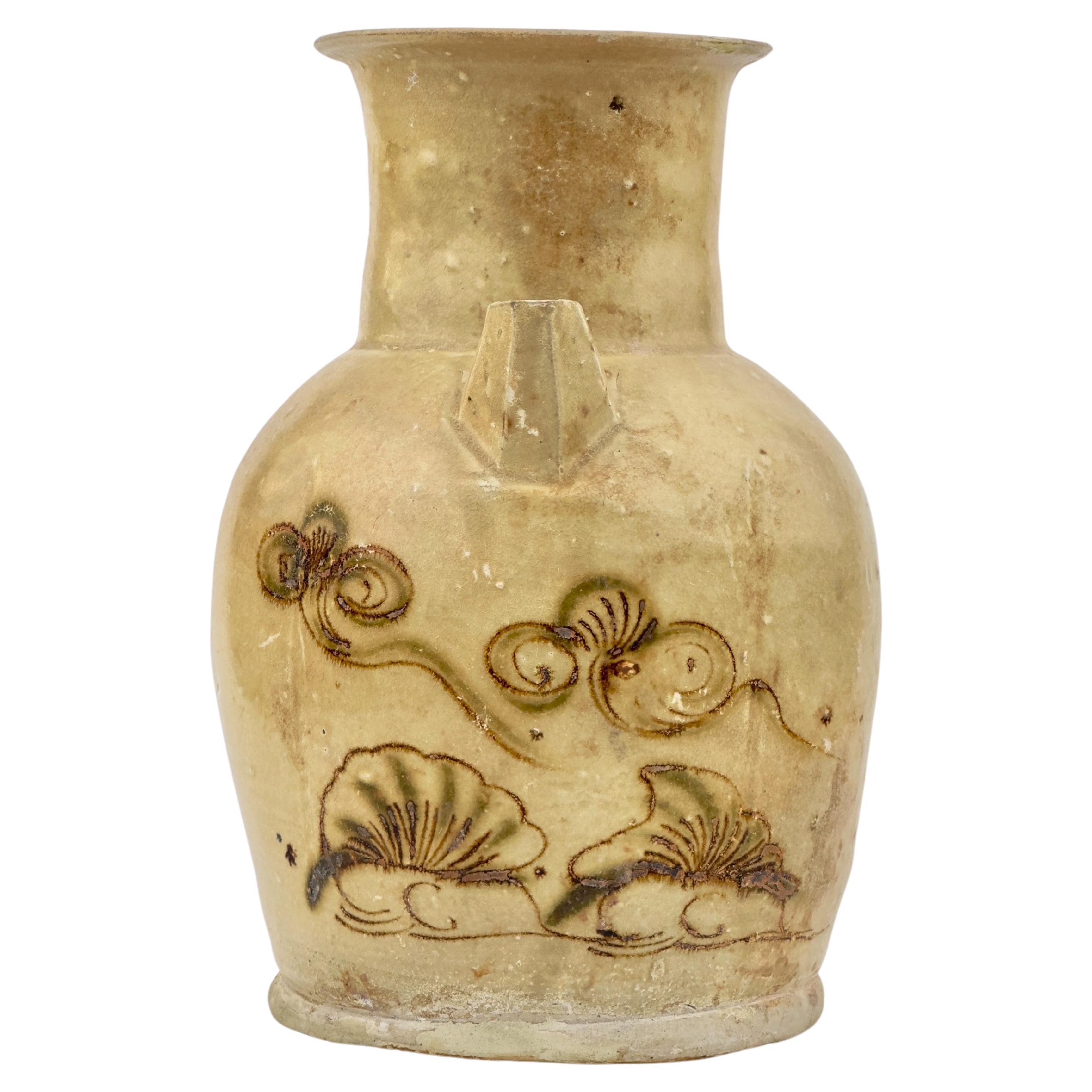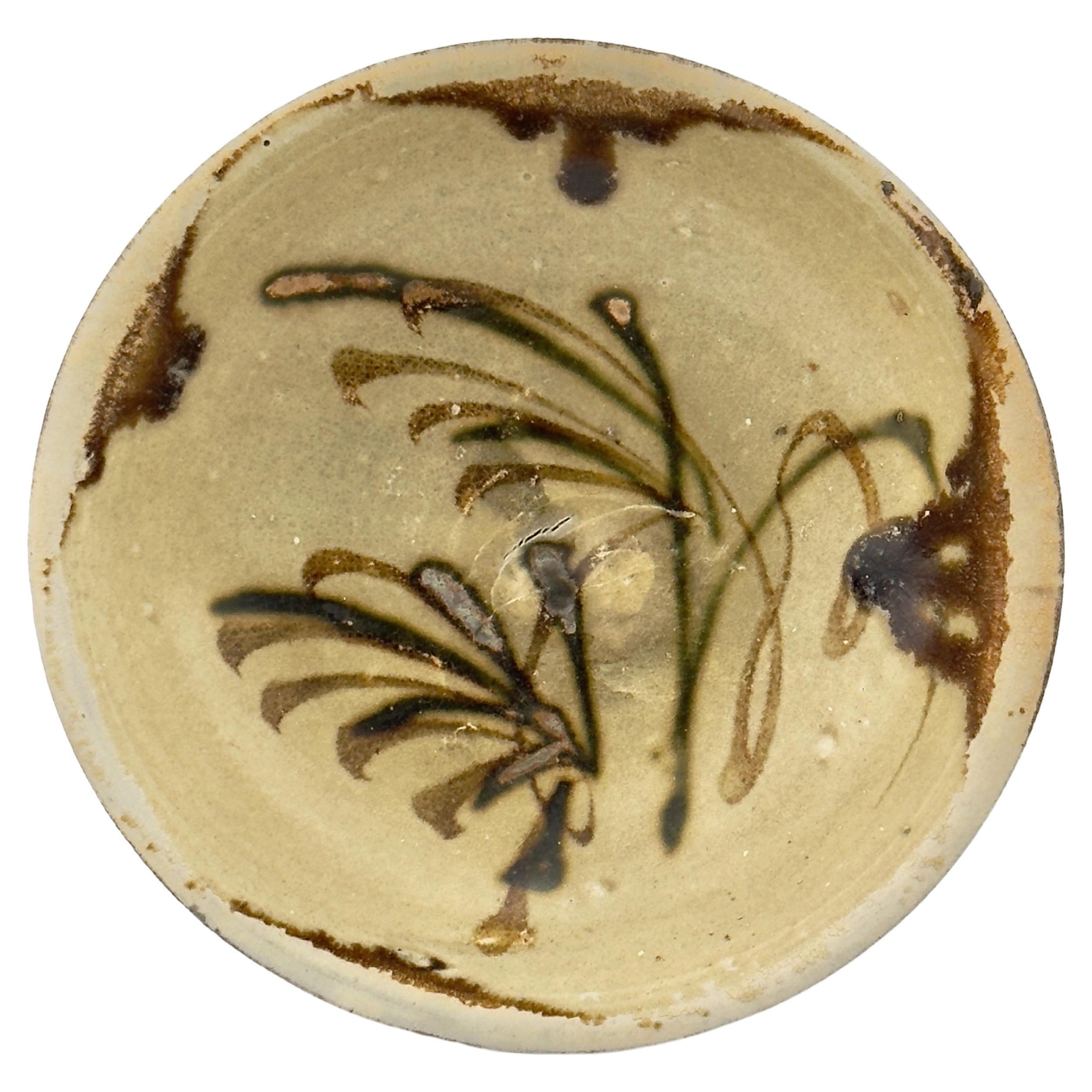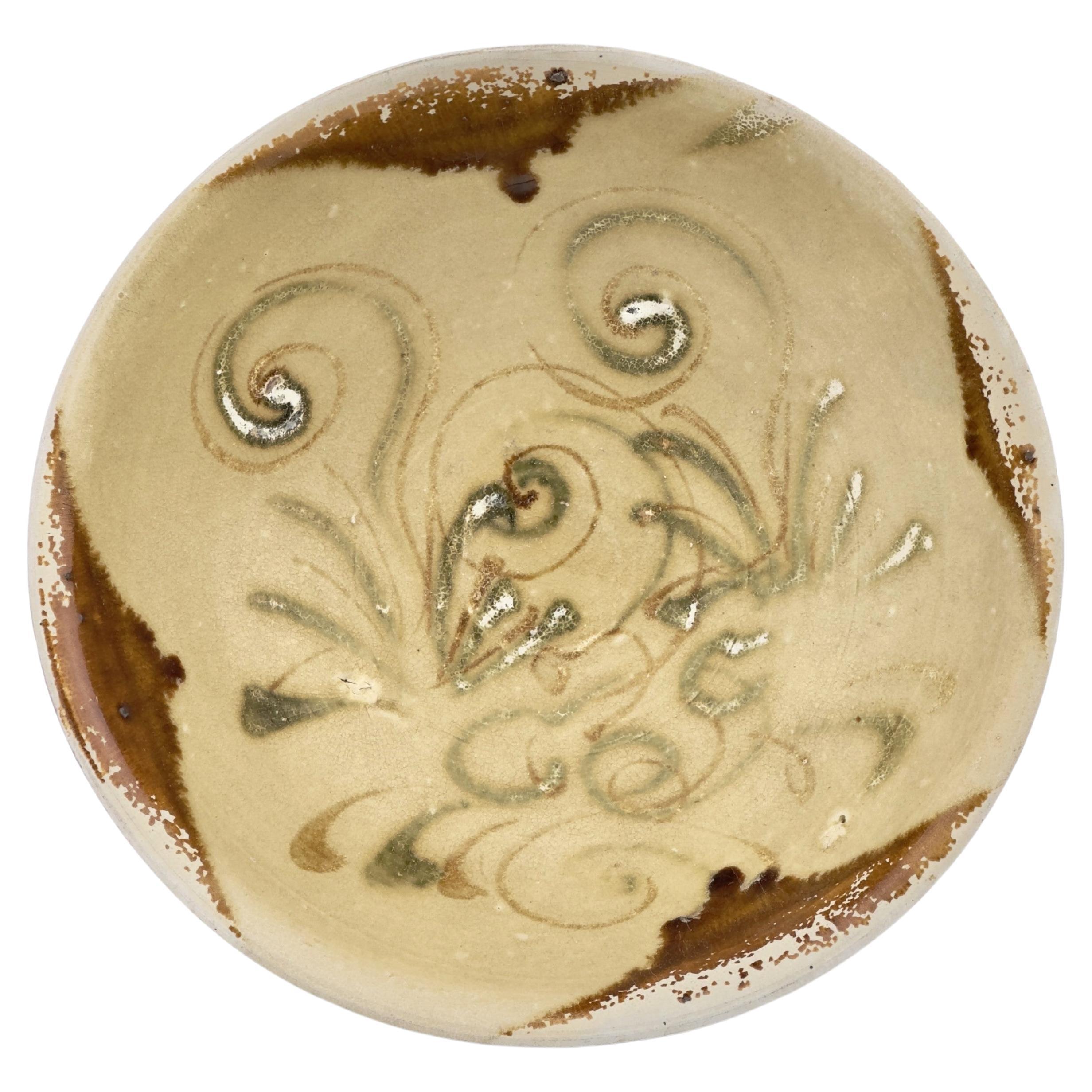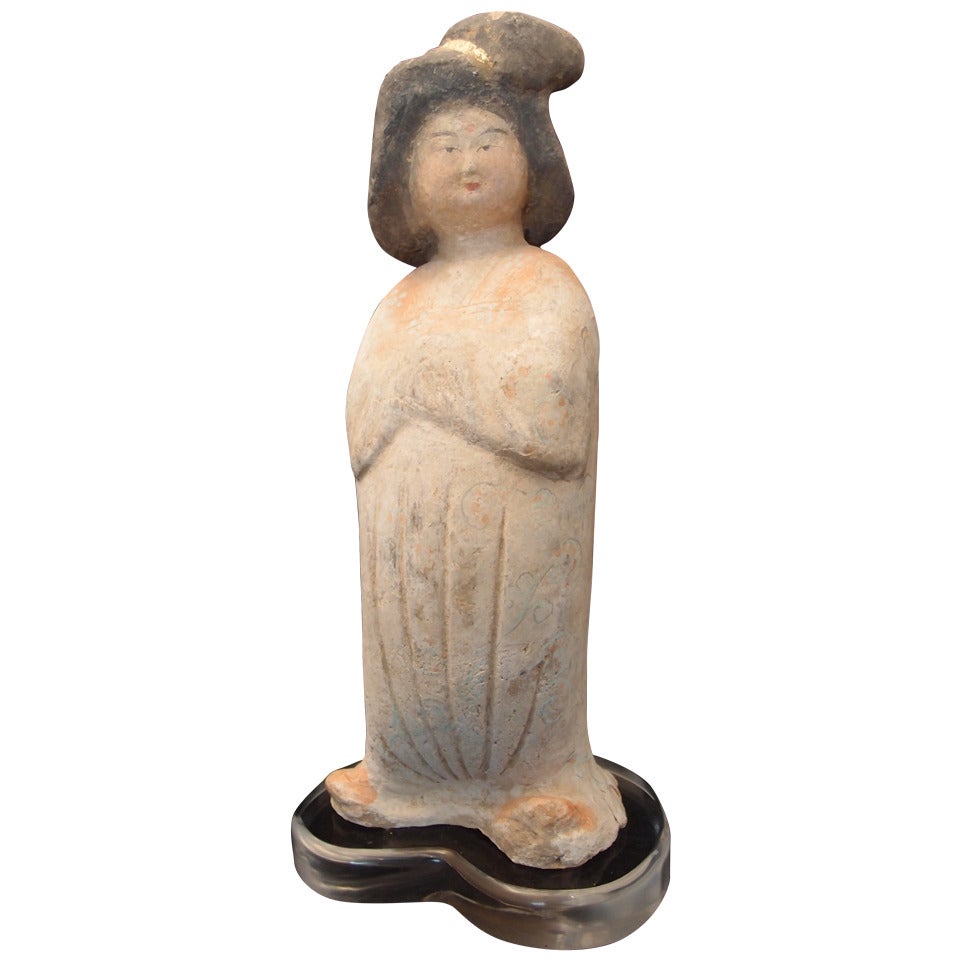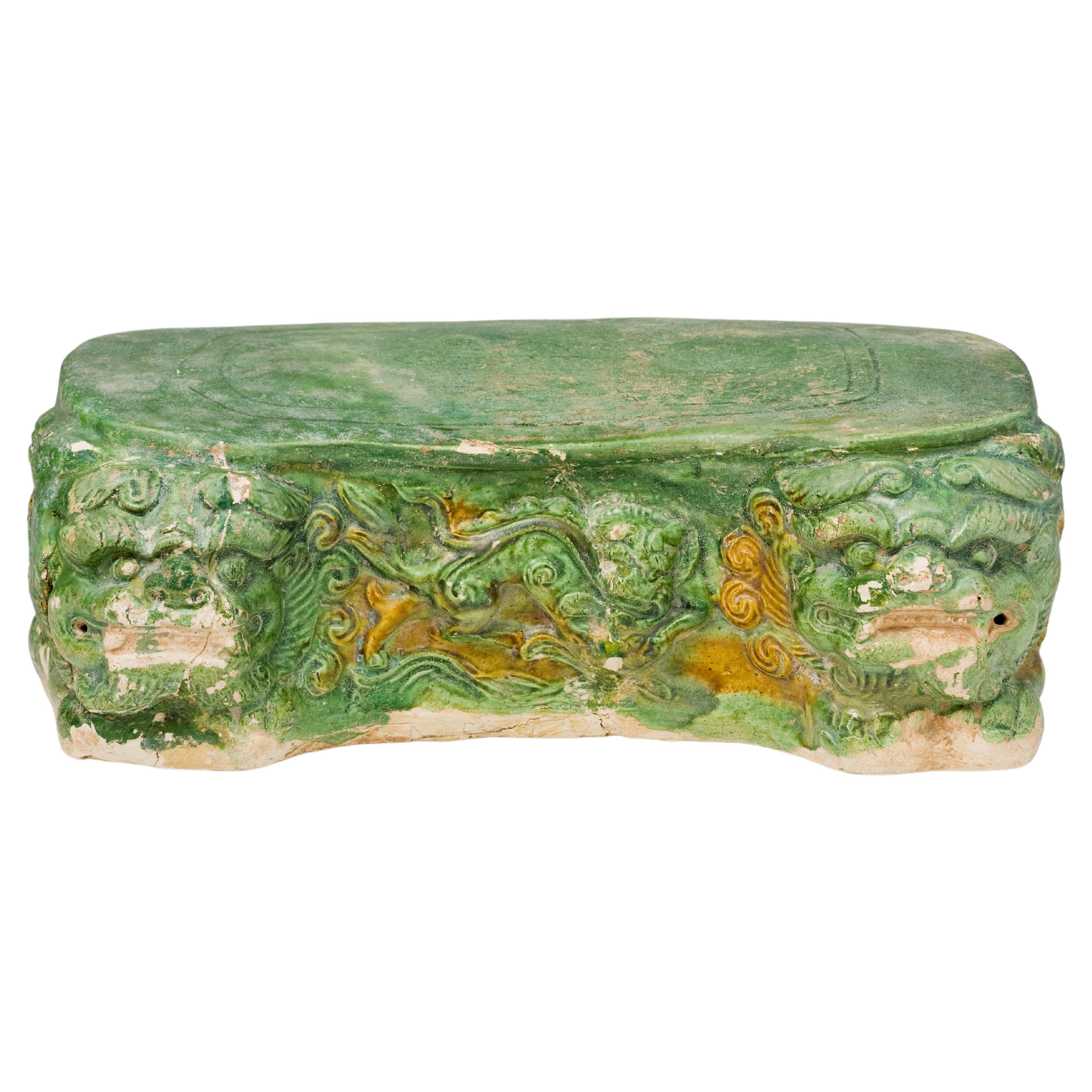Items Similar to Changsha Ewer, Tang Dynasty
Want more images or videos?
Request additional images or videos from the seller
1 of 13
Changsha Ewer, Tang Dynasty
About the Item
It features two small lug handles on either side of the neck and a spout opposite the main handle. This ewer might have been used for wine or other liquids, which were poured through the spout for drinking or ceremonial purposes.
Date : 9th Century
Made in : Hunan province
Dimension : 17.5cm (Height) x 7.5cm(Mouth Diameter)
Condition : Fair (some stains on the small two handles)
Provenance : Acquired in 1999, Hongkong
* Changsha Ware
Multiple “wares,” or styles, of pottery were developed during the Tang Dynasty. Many of these wares featured sancai glazing, a distinct color palette of lead glazes brushed, dipped, and poured over the vessel. Sancai glazed pottery used three colors derived from minerals: yellow-brown from iron oxide, green from copper oxide, and white from lead. Rarely, ceramicists included cobalt to create a blue glaze, but it was far too expensive for regular use. Changsha Ware is a classic example of a three-color sancai ware. Yet, it is also a style that revitalized ancient Chinese pottery. It was the first time that ceramicists perfected the underglaze painting technique. Artists decorated their clay bowls, jars, and figurines with colorful paintings and delicate calligraphy which were then protected by a transparent coat of lead glaze.
Changsha Ware was produced with distinct and recognizable designs and motifs. Painted designs often depict flowers, vines, and mountain landscapes. Some painting is simply splotches of color that accentuate stamped and molded clay ornaments. Being sold overseas, Changsha Ware integrated foreign cultural elements with traditional Chinese aesthetic principles.
Changsha Ware varies widely in form. To make sense of this variability, objects are typically classified into functional categories such as bowls, pots, ewers (or jugs), plates, boxes, lamps, pillows, candlesticks, censers, water droppers, mortars, paper weights, tea grinders, and figurines. Examples of these forms can be found below.
References : Timothy S.Y. Lam Museum of Anthropology
- Dimensions:Height: 6.89 in (17.5 cm)Diameter: 2.96 in (7.5 cm)
- Style:Tang (Of the Period)
- Materials and Techniques:
- Place of Origin:
- Period:
- Date of Manufacture:9th Century
- Condition:Minor fading.
- Seller Location:seoul, KR
- Reference Number:1stDibs: LU9577238995742
About the Seller
New to 1stDibs
Joined in the past six months.
4.5
Vetted Seller
These experienced sellers undergo a comprehensive evaluation by our team of in-house experts.
Established in 1999
1stDibs seller since 2023
Typical response time: 1 hour
- ShippingRetrieving quote...Ships From: seoul, Korea South
- Return PolicyA return for this item may be initiated within 10 days of delivery.
More From This SellerView All
- Changsha ewer, Tang Dynasty(618-907)Located in seoul, KRChangsha Ware has distinct and recognizable designs and motifs. Painted designs often depict flowers, vines, clouds and mountain landscapes. Some painting is simply splotches of colo...Category
Antique 15th Century and Earlier Chinese Tang Antiquities
MaterialsStoneware
- Changsha ewer, Tang Dynasty(618-907)Located in seoul, KRChangsha Ware has distinct and recognizable designs and motifs. Painted designs often depict flowers, vines, clouds and mountain landscapes. Some painting is simply splotches of colo...Category
Antique 15th Century and Earlier Chinese Tang Antiquities
MaterialsStoneware
- Changsha bowl with abstract pattern presumed to be Islamic symbols, Tang DynastyLocated in seoul, KRThe edges have been dipped in four places with brown, probably iron-oxide. The well of the bowl is freely painted in green and coffee coloured brown. Period : Late Tang Dynasty Prod...Category
Antique 15th Century and Earlier Chinese Tang Antiquities
MaterialsStoneware
- Belitung ship, Large Changsha bowl with plant patterns, Tang PeriodLocated in seoul, KRThe edges have been dipped in four places with brown, probably iron-oxide. The well of the bowl is freely painted in green and coffee coloured brown. Period : Late Tang Dynasty Prod...Category
Antique 15th Century and Earlier Chinese Tang Antiquities
MaterialsPottery
- A Sancai-glazed pottery 'Haitai' Pillow, Tang dynastyLocated in seoul, KRThe pillow is intricately decorated with a vibrant pattern, demonstrating the craftsmanship and artistic sensibilities of the period. The Haitai is a creature from Chinese mythology,...Category
Antique 15th Century and Earlier Chinese Tang Antiquities
MaterialsEarthenware, Pottery
- Sancai-Glazed Pottery Tripod Jar, Tang DynastyLocated in seoul, KRThe globular body is supported on three claw feet and is covered in a splashed-glaze of amber, green and cream color, which stops short of the unglazed base. Date : Tang Dynasty(61...Category
Antique 15th Century and Earlier Chinese Tang Antiquities
MaterialsEarthenware
You May Also Like
- Chinese Tang Dynasty Pottery Court LadyLocated in Austin, TXPainted pottery figure of an opulent Chinese court woman with up-swept hair and standing in a simply draped robe from the Tang Dynasty (618-907 AD). Her beauty is illuminated by the ...Category
Antique 15th Century and Earlier Chinese Tang Antiquities
MaterialsPottery
- Pair of Tang Dynasty Painted Pottery SoldiersLocated in Austin, TXA well modelled pair of Tang dynasty painted pottery soldiers. The warriors portrayed standing, dressed in form fitting, elaborate layered Armor with fitted helmets. The breastplate...Category
Antique 15th Century and Earlier Chinese Tang Figurative Sculptures
MaterialsPottery
- Fine Tang Dynasty Pottery Horse, Oxford TL TestedLocated in Greenwich, CTTang dynasty pottery statue of standing horse with removable saddle, Tang dynasty 618-907, come with Oxford authentication TL test certificate. Oxford test num...Category
Antique 15th Century and Earlier Chinese Tang Sculptures and Carvings
MaterialsTerracotta
- Tang Dynasty Terracotta Camel Sculpture, 1st CenturyLocated in New York, NYA Chinese Terracotta camel from the Tang Dynasty. To the people of China’s Tang dynasty (618-907), very few animals were as useful and revered as th...Category
Antique 15th Century and Earlier Chinese Tang Antiquities
MaterialsTerracotta
- Chinese Tang Dynasty Painted Pottery Model of a CamelLocated in Austin, TXA powerfully sculpted Chinese Tang Dynasty pottery model of a camel. The camel is portrayed in a walking stance, long neck extended, with head held high, mouth askew chewing cud. The...Category
Antique 15th Century and Earlier Chinese Tang Antiquities
MaterialsPottery
- Tang Dynasty Sancai Glazed Pottery Camel, TL TestedLocated in Austin, TXAn evocative Chinese Tang dynasty (618 to 906 AD) sancai glazed pottery model of a braying camel. The camel is well modeled, standing foursquare upon a rectangular plinth, neck raised, head thrown back, and mouth open in either a defiant, or triumphant, bray. Although sancai means "three color", this particular camel is glazed with only two colors - mostly in amber, with patches of straw glaze mimicking the large patches of fur along the camel's legs, humps, head and neck. TL tested...Category
Antique 15th Century and Earlier Chinese Tang Antiquities
MaterialsPottery
Recently Viewed
View AllMore Ways To Browse
Asian Carved Bone Knife
Century Wood Barrel
Iron Roses
Danish Inspired Chairs
20th Century Lacquered Cocktail Table
Herman Miller Table 1970
9 Runner Rug
21st Century Art Deco Chandelier
Mirrored Tables 1950s
Pedestal For Vase
Signed Club Chair
Vintage Rug Overdye
Small Wood Divider
Scandinavian Grace
Mid Century Modern Bamboo And Rattan Mirror
21st C Sofa
Mid Century Modern Dining Arm Pair
Orange And Blue Porcelain
